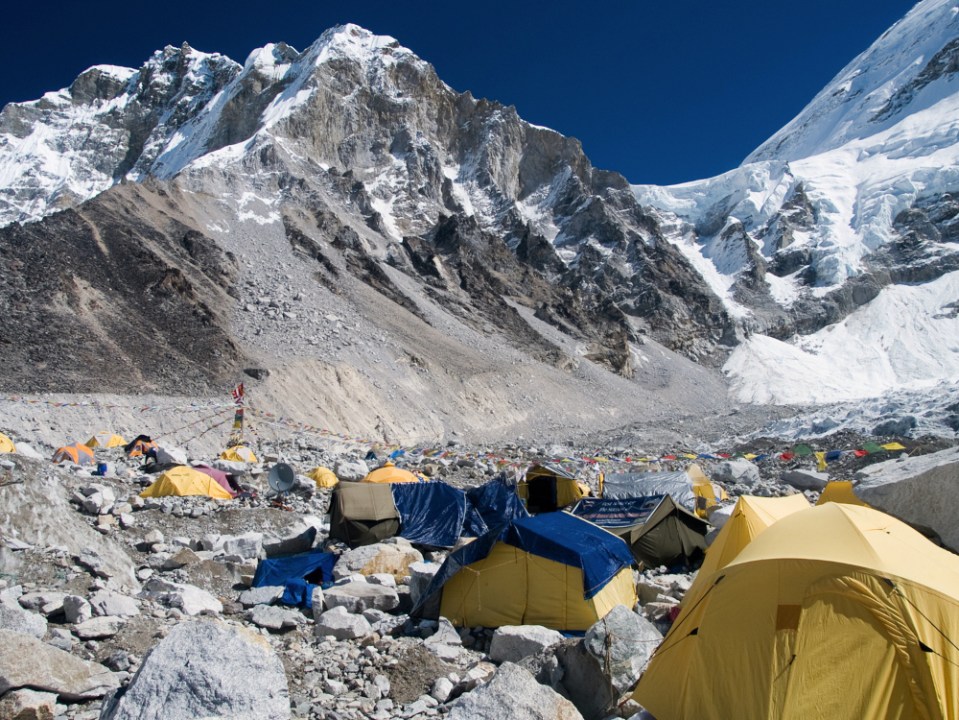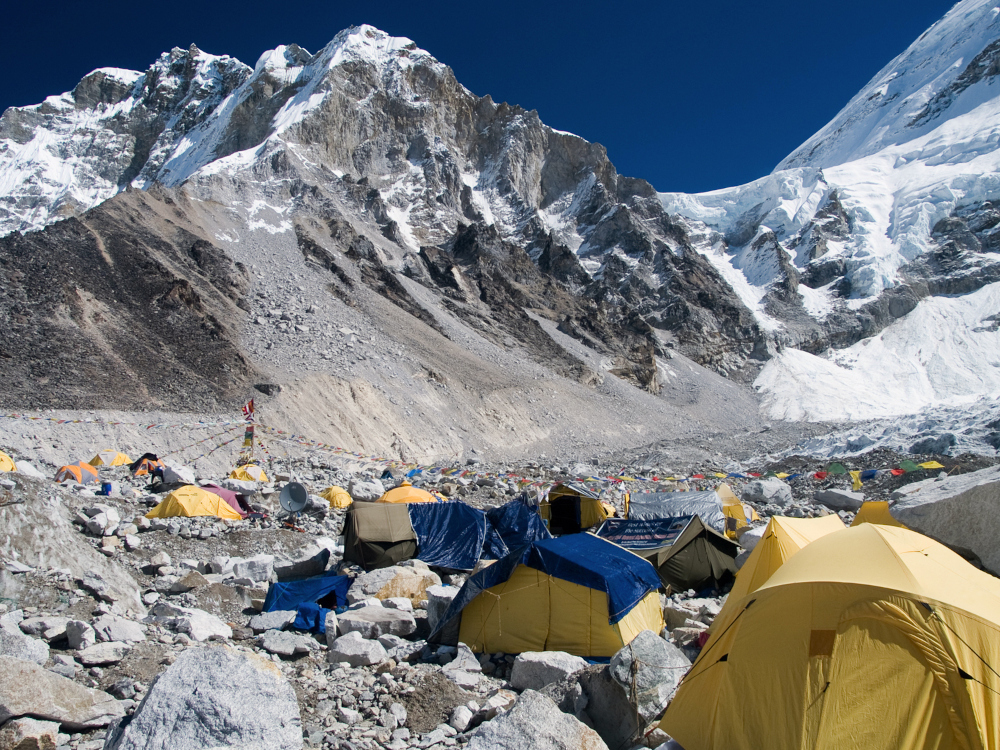Reaching the top of the world and returning to London within a week without so much as stopping for a coffee in Kathmandu sounds like the stuff dreams are made of. But on 21 May 2025, four former members of the British special forces turned this dream into reality when they stood on the summit of Mount Everest four days and 11 hours after leaving the UK. Their secret was to inhale Xenon two weeks prior to the climb, a gas well known to anaesthetists, but so far unheard of in mountaineering.
When I climbed Everest in 2009, I remember thinking that the World Anti-Doping Agency would have a field day at base camp
‘Although Xenon has worked well in clinical studies, it is very rarely used for patients in the UK. It is expensive and complex to administer with no significant benefits over established agents,’ says Dr Mike Grocott, a professor of anaesthesia and critical care medicine at the University of Southampton. This gas has now rocked the mountaineering world – leaving government officials, climbers and doctors scrambling to make sense of it.
In January, when the Financial Times broke the story of using Xenon for Everest, a bold bizarre-sounding innovation from Austrian expedition operator Lukas Furtenbach and German anaesthetist Dr Michael Fries, it sparked instant controversy. Even the International Climbing and Mountaineering Federation released a statement solemnly reminding the world that ‘the ethics and style with which we climb and the environmental and social considerations’ still matter. It was an earnest sentiment and frankly, a surprising one. Having followed Himalayan mountaineering for over two decades through my work for the Himalayan Database, I have seen those ethics being gradually thrown out of the window. Purists may cringe at the mention of Xenon, but the truth is that we have always had aids to perform better at altitude. Even the legendary 1953 expedition, which crowned Tenzing Norgay Sherpa and Edmund Hillary as the first people to stand atop the world, relied on what might be considered a rather significant performance enhancer called ‘bottled oxygen’ which effectively lowers Everest’s altitude from 8,848m to around 6,500m. It wasn’t until 1978 that Austrian Peter Habeler and South Tyrolean Reinhold Messner proved that Everest could be climbed without supplemental oxygen. Since then, a mere 195 people have followed suit, which is a sliver of the roughly 7,400 who have reached the summit wearing a mask.
So why the outrage over Xenon? ‘People seem to struggle with innovation and change,’ says Furtenbach whose Everest clients have pre-acclimatised in hypoxic tents since 2016. He argues that a faster ascent is actually safer. Less time spent at high altitude means lower risk of frostbite, hypothermia, acute mountain sickness or a serac collapse in the treacherous Khumbu Icefall. Not to mention the environmental benefit of fewer people milling around base camp for weeks – meaning less human waste is left behind.
Perhaps the real issue is the transparency. Unlike others, Furtenbach and his team have been open about Xenon. When I climbed Everest in 2009, I remember thinking that the World Anti-Doping Agency would have a field day at base camp. The sheer volume of substances being popped or injected behind thin tent walls was already mind-boggling, and yet, nobody batted an eyelid.
Now, suddenly, the climbing world seems to be up in arms. Xenon has sparked not only outrage but an official investigation by the Nepal government into the ethics and legality of the method. What seems to have escaped their attention is that the gas wasn’t administered in Nepal, but in a specialised clinic in Germany. Still, officials have gone so far as to consider withholding summit certificates from the four Brits.
But if that’s the new standard, should we also deny certificates to the hundreds who reach the top each year using bottled oxygen? As South Tyrolean mountaineering legend Hans Kammerlander once put it, ‘Climbing Everest with supplemental oxygen is like riding the Tour de France on a motorbike.’
One of the government’s other objections is that Xenon might harm Nepal’s tourism industry by cutting short climbers’ time in the country. But that could be a miscalculation. If anything, Xenon could entice more people to attempt Everest – whether or not that’s a good thing is another debate entirely. After all, those willing to drop €150,000 on the full Xenon package, once it’s fully off the ground, rarely have the luxury of time. And if a handful of high-speedsters are added to the mix, it’s hardly a loss for tourism – more likely a modest gain.
As Professor Grocott points out, Xenon is unlikely to revolutionise mountaineering and will, at most, remain a fascinating side story. In the end, how one climbs the mountain is a personal choice. What matters is doing it with respect – for the peak, for its dangers, and for the people who call it home.








Comments